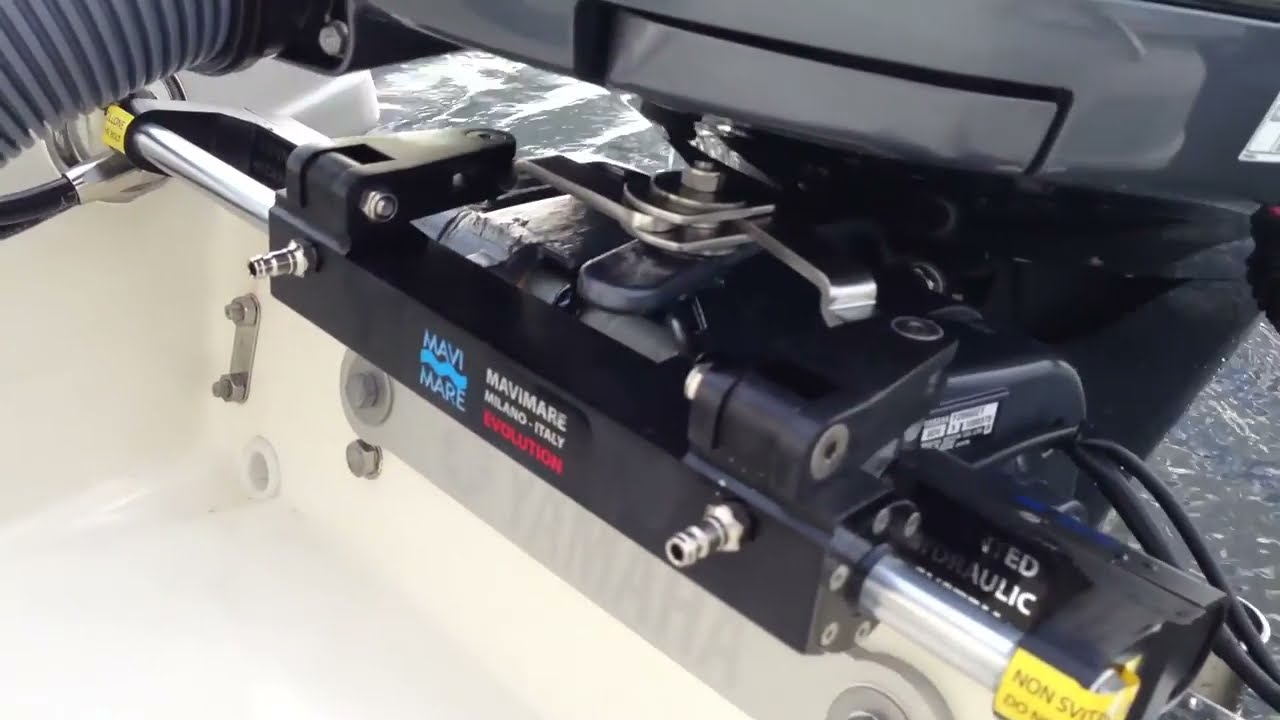Effortless Boating: Mastering Your Outboard Motor Hydraulic System

Imagine effortlessly raising and lowering your heavy outboard motor with a touch of a button. No more straining, no more backaches. That's the power of an outboard motor hydraulic lift. These ingenious systems have revolutionized boating, making launching and retrieving your vessel a breeze. But what exactly is behind this technology, and how can you ensure it works flawlessly for years to come?
An outboard motor hydraulic lift system uses fluid pressure to smoothly and efficiently raise and lower your outboard. It’s a sophisticated alternative to manual lifting, providing effortless control and extending the life of your motor. This article will delve into the world of these systems, exploring everything from their historical development to practical maintenance tips.
Early outboard motors were relatively small and lightweight, making manual lifting manageable. As engines became larger and heavier, the need for a more efficient lifting system became apparent. This led to the development of hydraulic lifts, which provided the necessary power and control to handle these increasingly hefty outboards. The introduction of hydraulic systems marked a significant advancement in boating technology, improving convenience and safety for boat owners.
The core components of a typical outboard motor hydraulic lift include a hydraulic pump, a hydraulic cylinder (or ram), hydraulic fluid, and control valves. The pump generates the pressure needed to move the hydraulic fluid, which in turn activates the cylinder. This cylinder extends or retracts, raising or lowering the motor. Control valves regulate the flow of fluid, allowing for precise control of the lifting and lowering process.
Proper maintenance is essential to ensure the longevity and reliability of your outboard motor hydraulic system. Regular checks of the hydraulic fluid levels, inspection of hoses and connections for leaks, and occasional lubrication of moving parts are crucial. Neglecting these tasks can lead to costly repairs and potentially dangerous situations on the water.
One of the most significant benefits of an outboard hydraulic lift is the ease of use. Raising and lowering a heavy outboard manually can be a strenuous task, particularly for those with physical limitations. A hydraulic system allows you to perform this operation with minimal effort, enhancing the overall boating experience.
Another advantage is the protection provided to your outboard motor. The smooth and controlled movement of a hydraulic lift minimizes stress on the motor's mounting bracket and transom, reducing the risk of damage and extending the lifespan of your valuable equipment.
Finally, a hydraulic lift contributes to improved boat performance. When your outboard is trimmed correctly, it enhances fuel efficiency and optimizes speed and handling. A hydraulic lift allows for precise trimming adjustments, enabling you to fine-tune your boat's performance in various water conditions.
Before operating your outboard motor hydraulic lift, always consult the manufacturer's instructions for specific guidance. Generally, the process involves activating the lift pump, either electrically or manually, and controlling the movement of the motor using the control valves.
Advantages and Disadvantages of Outboard Motor Hydraulic Lifts
| Advantages | Disadvantages |
|---|---|
| Ease of Use | Higher initial cost |
| Protects Outboard Motor | Potential for hydraulic leaks |
| Improves Boat Performance | Requires regular maintenance |
Five Best Practices:
1. Regularly check fluid levels.
2. Inspect hoses and connections.
3. Lubricate moving parts.
4. Follow manufacturer’s instructions.
5. Have professional service performed annually.
Frequently Asked Questions:
1. How often should I check the hydraulic fluid? - Monthly.
2. What type of fluid should I use? - Consult your owner's manual.
3. Can I install a hydraulic lift myself? - Professional installation is recommended.
4. What should I do if I notice a leak? - Stop using the lift and seek professional repair.
5. How often should I have the system serviced? - Annually.
6. What are the signs of a failing hydraulic pump? - Slow operation, unusual noises.
7. How much does a hydraulic lift system cost? - Varies depending on size and features.
8. Can I use a hydraulic lift in saltwater? - Yes, but ensure it's designed for marine use.
Tips and Tricks: Always store your boat with the outboard motor trimmed down to relieve pressure on the hydraulic system.
In conclusion, an outboard motor hydraulic lift is a valuable investment for any boat owner. It simplifies the process of launching and retrieving your boat, protects your outboard motor, and enhances overall boat performance. While there are some maintenance requirements, the benefits far outweigh the costs. By understanding how these systems work and following best practices for maintenance, you can ensure smooth and effortless boating for years to come. Take the time to research the various options available, choose a system that meets your needs, and enjoy the convenience and peace of mind that comes with owning an outboard motor hydraulic lift. Don't let the weight of your outboard hold you back – embrace the power of hydraulics and elevate your boating experience.
Boat bling hot sauce a nautical culinary adventure
Power up your ring a guide to transformer installation
Libra daily horoscope vogue india insights













